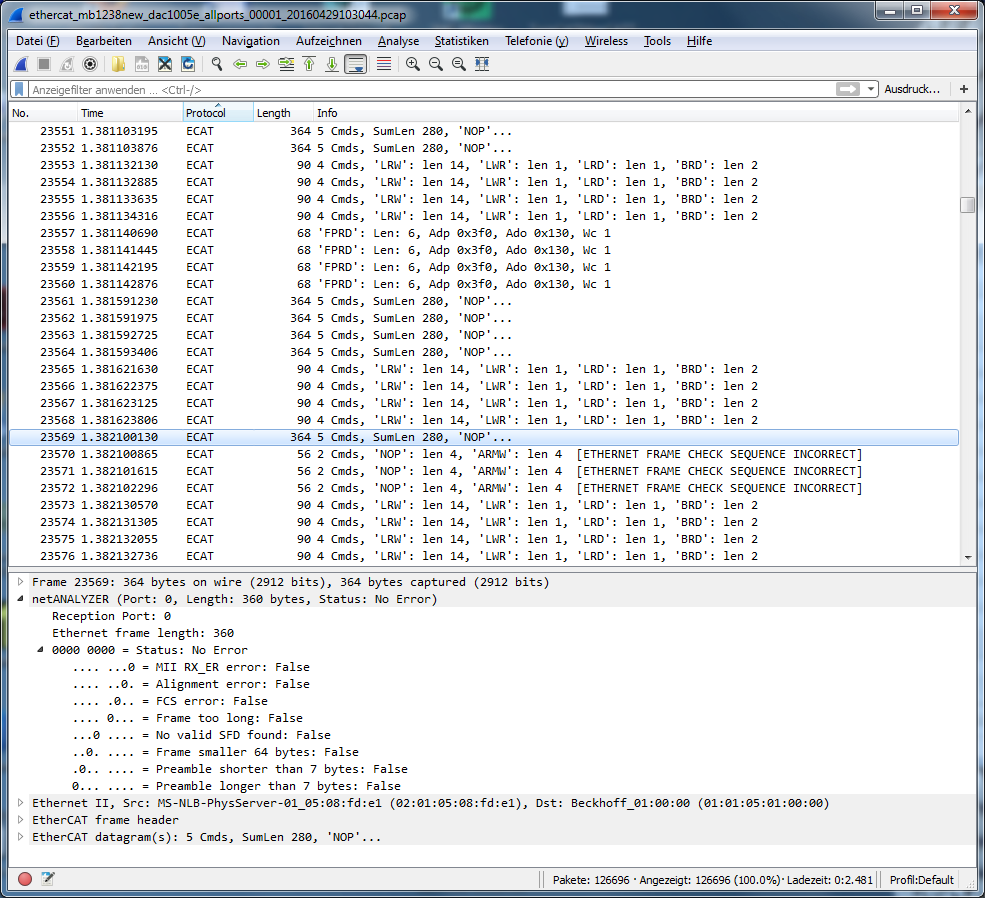Hello,
one of our customers reported problems with our sitara Am3359 EtherCAT device with TexasInstruments TLK106 Phy's in direct topologic neighborhood with a device with MICREL Phy's (KSZ8721). Our device is reporting crc-errors of the frames from the micrel-Phy-device very often (all 30seconds). This is happening only if our sitara based device and the other device with micrel-Phys are connected in direct topologic neighborhood together. Then allways the sitara cut off the frame from the Micrel-device and reports a crc-error. The frames to the micrel-device are read as ok.
If there is another EtherCAT device in between, there are no problems.
We are using the actual sysbios_ind_sdk_02.01.02.02.
In Beckhoff Phy Selection Guide v2.3 there is written this:
"Fast Link Down mode with 10 μs reaction time is supported (requires configuration via MII management, default is 200 μs). Recommended configuration for Fast Link Down mode in CR3: enable Bit 3 (RX Error count) and Bit 0 (Signal/Energy loss). MI Link detection and configuration must not be used, because register 9 is PHY specific."
As I found it in tiescbsp.c FastLinkDownMode is correct used (Board_phyFastLinkDownDetEnable()) and FastRXDV (Board_phyFastRXDVDetEnable()) is not used anymore.
But what may be the reason for these crc errors and cut off frames? FastLinkDown's because of RXErrorCount?
Best regards
Frank





